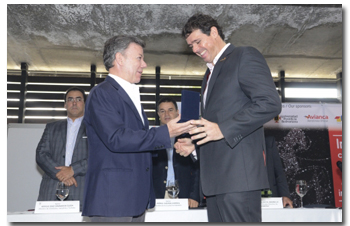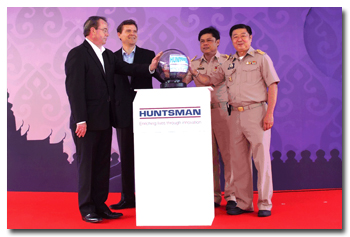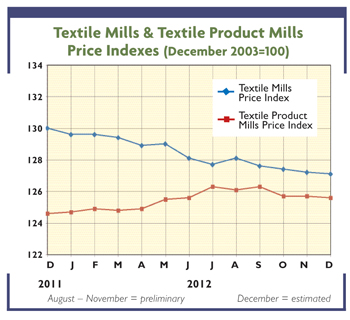When it comes to investments, a serious investment plan has to take various cost factors into
consideration. However, not only must price, delivery times and other factors be considered.
Because of rising energy and labor expenses, energy and maintenance costs play more and more a very
important role.
But before even thinking of buying new machinery, one should be clear about the level of the
equipment to be purchased. High-quality machines have a much better trade-in value than less
sophisticated machinery. It’s just about the same situation when you, dear reader, replace your
car.
Some weeks ago, the Rupp Report met Hermann Selker, head of marketing of Germany-based
Trützschler GmbH & Co. KG. Talking about savings in production, Selker started a very
interesting discussion about the ways and possibilities for a spinning mill to save money by using
different electric lighting.
LEDs
Selker mentioned that he visited a big spinning mill in Pakistan that has about 6,000 square
meters of production space. And the halls were lit using light-emitting diode (LED) systems. “I’ve
never seen this before,” he said. “Of course, we all know the advantages of LEDs versus traditional
lights: approximately 85 percent less energy consumption and three-to-five-times-higher life cycles
than other lights. However, the plant manager explained to me some other reasons why he has
invested in this expensive technology.”
Advantages
The answer was stunning, Selker said: “He said that the availability of electricity
in Pakistan is limited. So if the consumption of energy for lighting is lower than with other light
sources, he can use more power for production in the spinning mill, which makes it much more
economical. The maintenance costs are virtually zero, and there is no need to change neon tubes all
the time. Even without these factors, the return on investment (ROI) is about seven to eight years.
And if the power costs further increase, the ROI will be reached even sooner.”
Full Calculation Is Needed
The Rupp Report wanted to know why Selker is putting so much emphasis on this story.
Selker: Well, it is because investment decisions for new machinery and equipment
are based sometimes on similar arguments: Over and over again in the textile industry, only the
pure investment costs are considered. On the other hand, energy costs become more important. Often,
the impact of the total costs during the service life of machines and equipment — the life cycle
costs (LCC) — are not reflected enough.
RR: What does that mean?
Selker: Only when all the costs are predictable and known during the service life
can one decide on planned investments properly. By the way, the pure investment costs in the
textile industry sometimes are only about 10 to 20 percent of the LCC.
RR: Do you have an example, most probably in spinning?
Selker: Yes. In spinning, the production costs of a plant are somewhat equal to
the capital costs. That means for the economy of the whole plant, low energy costs are as important
as low investment costs.
RR: Are there other savings?
Selker: Many more. For example, machinery from Germany tends to use engines of the
highest energy-efficiency classes. But the electric bill is not the end of the story. There are
other important factors to be considered in spinning.
Other Important Factors
RR: Which ones?
Selker: Firstly, maintenance and repair costs are ongoing for each plant. Machines
can be very demanding in maintenance — or maybe not. The absence of mechanical gears, the
application of belts instead of chains, the use of maintenance-free motors and the use of
high-quality bearings are just a few examples of how to reduce maintenance costs year after year.
Secondly, compressed air, filters and air conditioning must be considered. Compressed air is
very expensive. By taking intelligent measures, the consumption of compressed air can be reduced
considerably. The size of the filter system is reflected in the investment and operation costs. The
aerodynamic optimization of the exhaust systems reduces the filtering requirements.
Thirdly, there are waste costs. In spinning, the costs of waste are very high. However, there
are a lot of possible savings. This point is much neglected, and yet, it is the most important if
one is looking at the LCC. Half a percent more or less waste often determines the profitability of
a spinning mill. The Pakistani mill manager said that with high-tech equipment from Germany,
savings are possible in the amount of US$50,000 to $100,000 and even more.
A Good Value For The Money
RR: But how do you handle the equipment if the machines are getting old and are
outdated?
Selker: Well, you know that in most of the sectors, high-quality equipment can be
sold second-hand for a much better price; let’s take the example of cars. Investments in the
textile machinery are just the same: At the end of their life cycle, maybe after 10 or 12 years,
the high-tech machinery can still have a good value, while less sophisticated equipment only has
scrap value.
RR: Therefore, the consideration of the LCC is rather important for a serious
investment plan?
Selker: Definitely: although it’s not only the higher economical profit but also
an environmental benefit. Lower energy costs, less waste and so on are the cornerstones of a
sustainable investment strategy. That’s why one should think about all these aspects before an
investment decision is made. The German textile machinery manufacturers take the aspects of a
positive LCC very much into consideration when they develop a new product.
Before making any investment decision, one should ask dealers of secondhand textile
machinery: Which brands still have a certain value when their first life cycle is over?
It makes quite a huge difference in the LCC whether older machinery should be scrapped or
will bring up to 30 percent of its original value on the used machinery market. An investment in
which the price is the only top priority may be very expensive a few years later.
January 29, 2013







